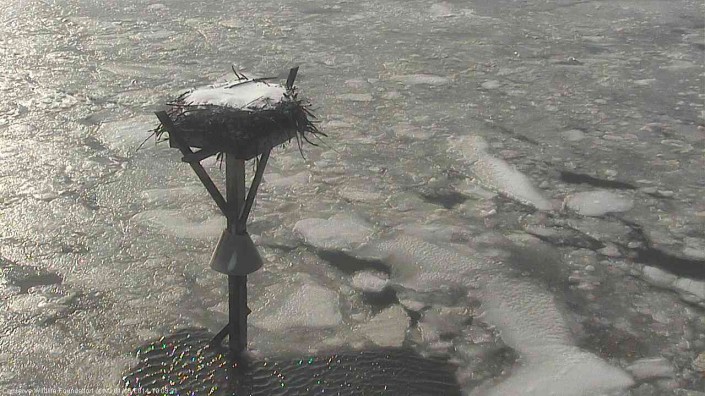Osprey Cam reveals winter scenery
Polar vortex, peregrines, and lots of snow geese
The extreme cold weather in January brought some really neat winter scenery to the coastal saltmarsh. One of the most productive ecosystems in the world is almost totally desolate in the middle of winter. There are still a few signs of life though, which have been captured by our Osprey Cam, including top tiers predators, peregrine falcons, and herbivores, snow geese. There’s no doubt that each plays a role in the ecosystem. The snow geese eat any kind of vegetation that they can find and they consume any part of the plant, seeds, stems, leaves, tubers, and roots. The osprey cam showed them sticking there heads underground to forage on the rhizoidial roots of saltmarsh cordgrass (Spartina alterniflora). Here’s an interesting fact from Cornell University’s All About Birds website: “Food passes through the Snow Goose’s digestive tract in only an hour or two, generating 6 to 15 droppings per hour. The defecation rate is highest when a goose is grubbing for rhizomes, because such food is very high in fiber and the goose inevitably swallows mud.” Their droppings will no doubt help to fertilize the marsh in the spring!








Discover more from Conserve Wildlife Foundation of NJ
Subscribe to get the latest posts sent to your email.